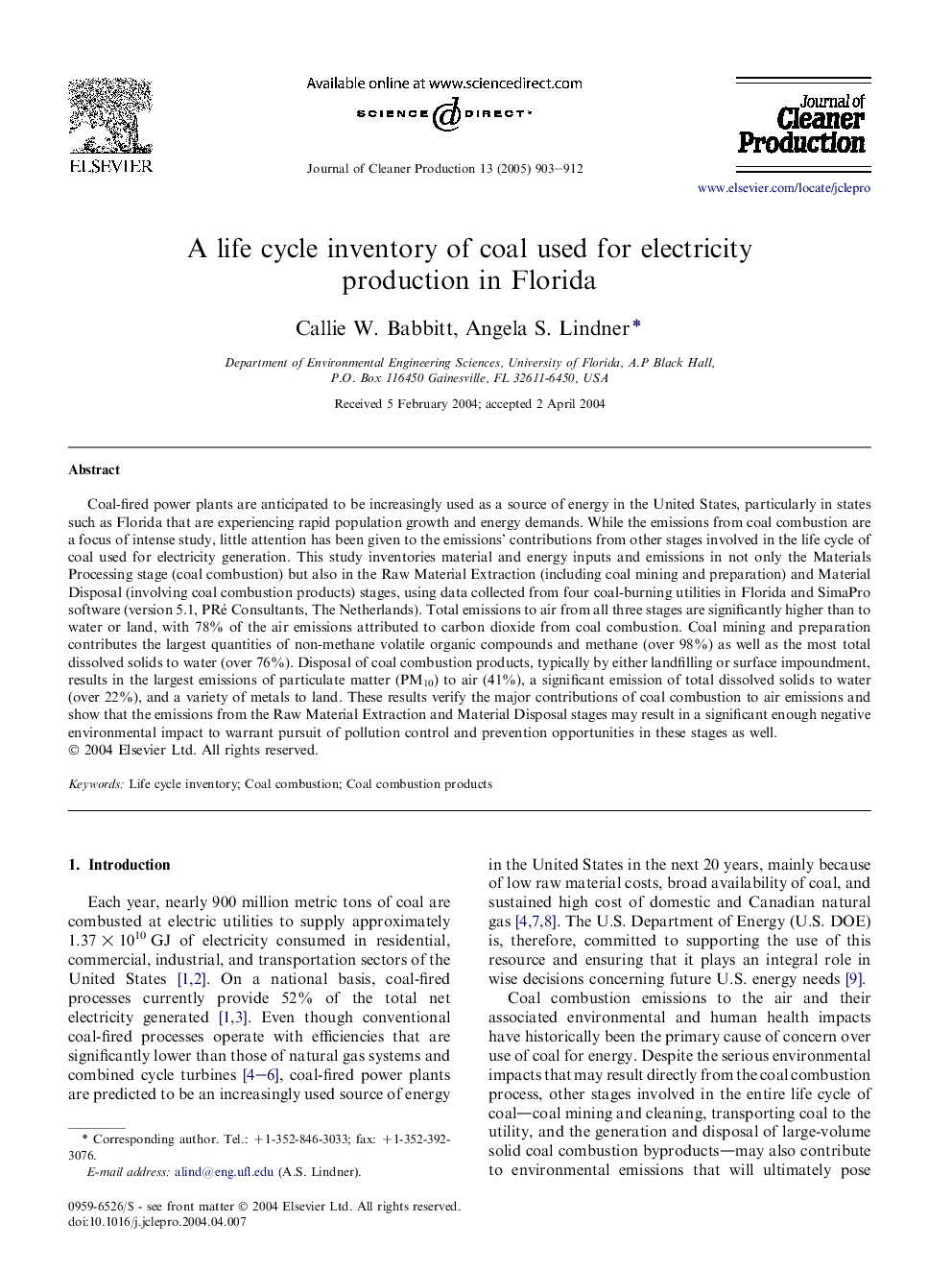| Article ID | Journal | Published Year | Pages | File Type |
|---|---|---|---|---|
| 10688468 | Journal of Cleaner Production | 2005 | 10 Pages |
Abstract
Coal-fired power plants are anticipated to be increasingly used as a source of energy in the United States, particularly in states such as Florida that are experiencing rapid population growth and energy demands. While the emissions from coal combustion are a focus of intense study, little attention has been given to the emissions' contributions from other stages involved in the life cycle of coal used for electricity generation. This study inventories material and energy inputs and emissions in not only the Materials Processing stage (coal combustion) but also in the Raw Material Extraction (including coal mining and preparation) and Material Disposal (involving coal combustion products) stages, using data collected from four coal-burning utilities in Florida and SimaPro software (version 5.1, PRé Consultants, The Netherlands). Total emissions to air from all three stages are significantly higher than to water or land, with 78% of the air emissions attributed to carbon dioxide from coal combustion. Coal mining and preparation contributes the largest quantities of non-methane volatile organic compounds and methane (over 98%) as well as the most total dissolved solids to water (over 76%). Disposal of coal combustion products, typically by either landfilling or surface impoundment, results in the largest emissions of particulate matter (PM10) to air (41%), a significant emission of total dissolved solids to water (over 22%), and a variety of metals to land. These results verify the major contributions of coal combustion to air emissions and show that the emissions from the Raw Material Extraction and Material Disposal stages may result in a significant enough negative environmental impact to warrant pursuit of pollution control and prevention opportunities in these stages as well.
Related Topics
Physical Sciences and Engineering
Energy
Renewable Energy, Sustainability and the Environment
Authors
Callie W. Babbitt, Angela S. Lindner,
